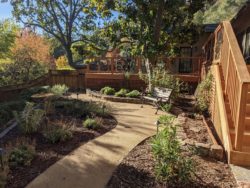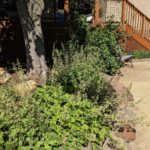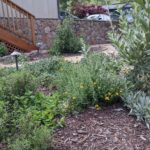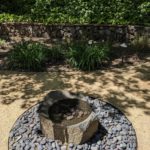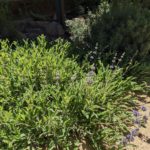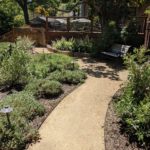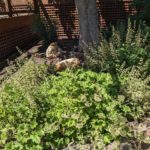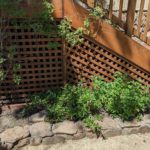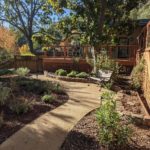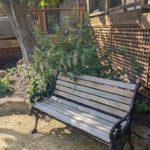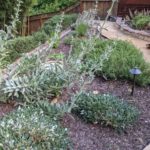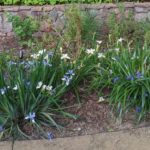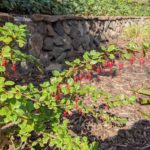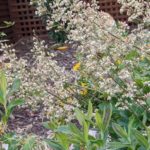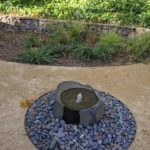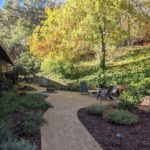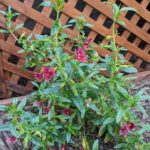Lot size: 2,000 sq. ft. front and 525 sq.ft side garden, 70% native
Garden Age: Garden was installed in the fall of 2020
Years on the Bringing Back the Natives Garden Tour:
Showcase Feature
When Patricia purchased the house in 2019 she knew the front and side lawns would have to go. In their place she wanted an attractive, low-maintenance, water-conserving garden that would provide habitat for wildlife. Kelly Marshall, of Kelly Marshall Garden Design, created this peaceful garden, which contains evergreen shrubs such as manzanita, California lilac, lilac verbena ‘de la Mina’, and coyote brush, which provide structure and stability throughout the year. In summer the profuse cream-to pinkish-white or intensely yellow blossoms of four types of buckwheat (Warriner Lytle, St. Catherine’s lace, Santa Cruz Island, and Shasta sulfur), attract butterflies, then turn a beautiful rust-to-chocolate color in the fall. Three kinds bunch grasses—the hardy foothill sedge, handsome Pacific reed grass, and stately California fescue, with its graceful, fountain-like blue-green foliage—flourish in the understory of the large trees that border this lot, providing visual interest throughout the year, and seeds for birds in the summer and fall. Drop down into one of the Adirondack chairs and rest a while; you won’t want to leave!
Other Garden Attractions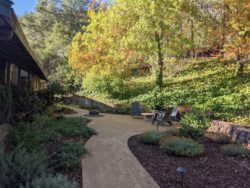
• A burbling rock fountain attracts birds and two-legged visitors alike.
• This is a new garden; if you’d like to see what a recently-installed native plant garden is like, this is the stop for you!
Gardening for Wildlife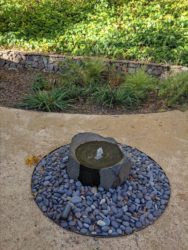
Oak trees—the ecological workhorses of the garden— provide shelter for birds, and places on which butterflies and moths can lay their eggs. Berries on the pink flowering and chaparral currants, fuchsia flowering gooseberry, manzanita, snowberry, and coffeeberry attract birds. Hummingbirds sip nectar from the long, tubular flowers of the California fuchsia, penstemon, and monkeyflower.
Our own, local narrow-leafed milkweed, Asclepius fasicularis has been included in the garden as milkweed is the only plant the endangered monarch butterfly can lay its eggs on
Nuthatches, hummingbirds, jays, butterflies, lizards and myriad insects have been seen in the garden.
Keystone species (watch this talk by Doug Tallamy!)
Keystone species—our own, local ecological powerhouse plants— in this garden include oaks, currants, California lilac, manzanitas, sages, buckwheats, and penstemon.
At least partially wheelchair accessible? Yes

